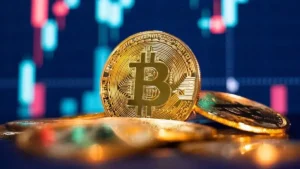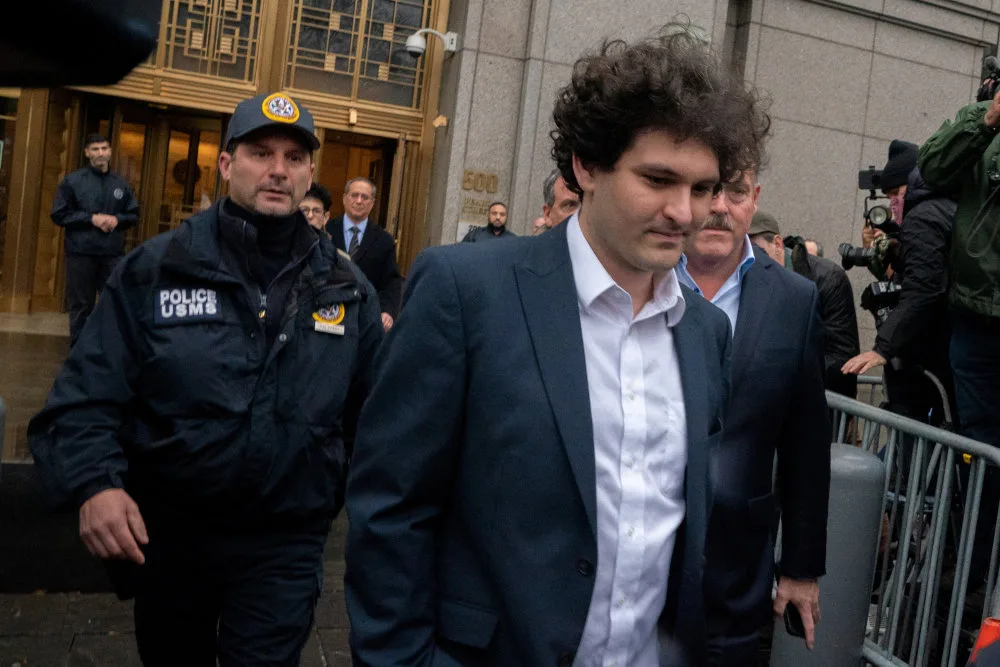Cryptocurrency is on the edge of its seat as a landmark trial unfolds. Sam Bankman-Fried, the mastermind behind the now-bankrupt crypto exchange FTX, is facing a day of reckoning in the Southern District of New York. In this gripping article, we plunge into the intricate details of this high-stakes trial, exploring the charges, the key players, and the alleged events that led to the disappearance of billions in customer funds.
Just last autumn, a damning report by CoinDesk sent shockwaves through the crypto world. It exposed the deeply entangled relationship between FTX and its sibling company, Alameda Research. As panic swept through FTX users trying to withdraw their funds, the exchange found itself woefully unprepared to meet the surging demand. A potential lifeline from rival exchange Binance slipped through their fingers, pushing FTX to file for bankruptcy in November. Shortly thereafter, Bankman-Fried was apprehended in the Bahamas, where FTX had its headquarters, and was extradited to the United States.
The Department of Justice (DOJ) has unleashed a barrage of 13 criminal charges against Bankman-Fried. Seven of these charges are slated for the initial trial, while a second trial is scheduled for March 2024. As this legal drama unfolds, parallel court proceedings in the criminal case, civil lawsuits initiated by U.S. financial regulators, and the FTX bankruptcy saga have unraveled the intricate web of circumstances that underlie this financial turmoil.

At the core of these allegations lies FTX’s failure to honor customer withdrawals. The DOJ contends that Bankman-Fried’s mishandling and misappropriation of funds played a pivotal role in this crisis. Shockingly, these funds appear to have been diverted toward high-risk trading ventures, personal loans, investments, acquisitions, real estate transactions, marketing blitzes, political contributions, and servicing massive debts.
In January, Bankman-Fried entered a resounding plea of “not guilty” to all seven charges. Following this plea, he spent most of his days under house arrest until August, when allegations of witness tampering resulted in his custody. If found guilty after a trial anticipated to last around one month, this once-celebrated crypto prodigy could potentially face a prison sentence spanning decades.
The Cryptocurrency Trial’s Cast of Characters:
In the unfolding cryptocurrency courtroom drama, it’s not just Sam Bankman-Fried in the spotlight. The inner workings of FTX and Alameda Research reveal a cast of intriguing characters entangled in this high-stakes trial. Some have already confessed to their roles in related offenses, while others from the cryptocurrency realm have been drawn into the orbit of FTX’s rise and fall.
Sam Bankman-Fried: The mastermind behind FTX and the brains behind Alameda Research, Sam Bankman-Fried stands accused, facing a total of 13 criminal charges. The initial trial will focus on seven of these charges, making him the central figure in this unfolding legal drama.
Caroline Ellison: CEO of Alameda Research and an on-and-off romantic partner of Bankman-Fried, Caroline’s journey with Sam began at Jane Street, a quantitative trading firm. She’s already pleaded guilty to a staggering seven criminal charges, spanning wire fraud, securities and commodities fraud, and money laundering.
Sam Trabucco: The former co-CEO of Alameda Research made a timely exit just three months before FTX’s dramatic collapse. Notably, the DOJ has not accused Trabucco of any wrongdoing, leaving his current cooperation with prosecutors shrouded in mystery.
Gary Wang: A co-founder of both FTX and Alameda Research, Gary’s connection with Bankman-Fried dates back to high school, and they later became roommates at MIT. He’s pleaded guilty to four criminal charges, involving wire fraud and conspiracy.
Nishad Singh: Holding the role of Director of Engineering at FTX, Singh made the transition from Meta to join Bankman-Fried’s team. He’s admitted to six criminal charges, including wire fraud, securities and commodities fraud, and money laundering.
Changpeng Zhao (CZ): As the CEO of Binance, the world’s largest cryptocurrency exchange, Zhao’s relationship with Bankman-Fried took a tense turn leading up to FTX’s downfall. Bankman-Fried attributed FTX’s collapse to tweets made by Zhao, and the prosecution may use these tweets to frame events for the jury. Zhao is simultaneously grappling with legal troubles, as U.S. regulators have leveled multiple violations against Binance, with the DOJ reportedly conducting its own investigation.
John J. Ray III: Tasked with steering FTX and its subsidiaries through the treacherous waters of bankruptcy, John Ray boasts a storied career, having overseen the liquidation of Enron. The prosecution may draw upon materials gathered by Ray during the FTX bankruptcy investigation to bolster its case against Bankman-Fried.
Barbara Fried and Joseph Bankman: Esteemed professors at Stanford Law School and the parents of Sam Bankman-Fried, this power couple brings their expertise, reputation, and connections into question. Under Ray’s guidance, a lawsuit was filed against Bankman-Fried and Fried on September 18, seeking the return of millions allegedly gifted to them through FTX. The suit also accuses them of complicity in the FTX fraud, allegations they vehemently deny.

The Enigmatic Dance of FTX and Alameda Research:
In the enigmatic world of cryptocurrency, a tale of financial intricacy and dubious dealings unravels, starring FTX and Alameda Research, both conceived by Sam Bankman-Fried. For too long, the financial ties between these entities remained shrouded in mystery. Bankman-Fried portrayed Alameda as a separate entity, specializing in arbitrage trading and market-making, while FTX purportedly focused on cryptocurrency and derivatives trading for customers.
But on November 2, 2022, a CoinDesk exposé flipped the script. The report unveiled a shocking revelation—Alameda’s balance sheet heavily depended on an illiquid crypto token, FTT. This token was birthed and issued by FTX, serving as a vehicle to provide FTX customers with trading fee discounts and other perks, all while funneling capital back into FTX without sacrificing equity. Alameda valuated its FTT holdings in the billions, based on market prices. Crucially, FTX and Alameda hoarded the lion’s share of FTT tokens, leaving only a scant few in circulation. This precarious setup left Alameda’s financial stability perilously exposed to any FTT sell-off.
In response to this revelation, and possibly seeking to weaken a competitor, Changpeng Zhao (CZ) of Binance announced plans to liquidate Binance’s hefty FTT holdings, valued at over $500 million at the time—a result of a prior deal to shed an equity stake in FTX. This triggered a frenzy of FTT sales by other traders, resulting in a jaw-dropping 75% price plummet and a substantial hit to Alameda’s asset value. The fear of FTX’s financial health sent users rushing to withdraw their funds from the exchange.
In the world of crypto, unlike traditional banking, exchanges must maintain a one-to-one ratio for customer funds—having a dollar in assets for every dollar deposited. FTX, like its peers, stipulated this requirement in its terms of service. However, according to the criminal indictment, FTX’s inability to meet the surge in withdrawals stemmed from diverting customer deposits to fund massive loans for its sibling company. Alameda had provided FTX with the now-worthless FTT token as collateral for these loans.
Investigations by the Department of Justice (DOJ), the Securities and Exchange Commission (SEC), the Commodities and Futures Trading Commission (CFTC), and FTX’s liquidators have laid bare the deep entanglement of Alameda and FTX.
FTX, it’s alleged, funneled customer deposits into bank accounts either owned or managed by Alameda, commingling these funds with the trading firm’s assets. Moreover, Alameda enjoyed an almost unrestricted line of credit extended by FTX, funded by customer deposits, through a specially devised mechanism conceived by Wang and Singh. This mechanism allowed Alameda to effectively maintain a negative balance on the exchange, effectively spending money that wasn’t rightfully theirs. Alameda utilized these funds for high-risk crypto trading, venture investments, political contributions, and an array of other purposes. Allegedly, Bankman-Fried authorized the use of billions more to repay substantial debts to external lenders.
In practice, there was little discernible separation between the two organizations, as asserted by the CFTC. Not only did they share office space, but key personnel, technology, intellectual property, and other resources were intertwined. Despite Bankman-Fried’s apparent relinquishing of control over Alameda to Ellison and Trabucco in October 2021, he retained de facto decision-making authority. CoinDesk later reported that Bankman-Fried and Ellison, along with eight other FTX executives, shared a luxury penthouse and were romantically involved.
As per allegations from the DOJ and SEC, Bankman-Fried borrowed over $1 billion from Alameda, again funded by FTX customers, and greenlit similar loans to his parents and FTX executives. The SEC contends that these loans were poorly documented, at times entirely lacking documentation. This lack of transparency allowed the loans to be employed for political donations, private investments, luxury jet acquisitions, and real estate purchases. The SEC and DOJ assert that these actions constituted criminal acts, as Bankman-Fried allegedly deceived clients and investors about asset segregation and protective measures, leaving them exposed to undisclosed, massive risks. The indictment paints a picture of “fraudulent schemes” through which Bankman-Fried purportedly “exploited the trust that FTX customers placed in him” to bolster his businesses, enhance his public image, and enrich himself.
Unraveling the Charges: Sam Bankman-Fried’s Trial:
As the trial of Sam Bankman-Fried approaches, the charges against him paint a complex picture of alleged deception, involving multiple stakeholders in the crypto world. This blog post delves into the charges, the prosecution’s strategy, and the potential consequences looming over the once-celebrated crypto entrepreneur.
The charges set for trial in October primarily revolve around allegations of deception orchestrated by FTX and Alameda Research, targeting various parties, including customers, lenders, and investors. Six of the seven charges are conspiracy charges, requiring the prosecution to establish Bankman-Fried’s awareness of the underlying criminal activities to secure a conviction. These charges include:
Scheme to Defraud FTX Customers through Wire Fraud
Wire Fraud Targeting FTX Customers
Conspiracy to Defraud Alameda Research Lenders through Wire Fraud
Wire Fraud Targeting Alameda Research Lenders
Conspiracy to Defraud FTX Customers in Derivatives Transactions
Conspiracy to Commit Securities Fraud against FTX Investors
Conspiracy to Facilitate Money Laundering
The Prosecution’s Approach:
To build its case against Bankman-Fried, the government has adopted a “thin to win” approach, as elucidated by legal expert Daniel Richman, a former federal prosecutor and law professor at Columbia University. This strategy involves presenting only the essential information needed for a conviction, with the aim of conveying the extent of the fraud without overwhelming the jury with technical details. The objective is to construct a narrative that effectively portrays the multifaceted nature of the fraud, even if it means omitting intricacies that might only engage cryptocurrency enthusiasts. As Richman aptly puts it, the key is to make it crystal clear that the actions essentially amount to defrauding people.
Furthermore, the prosecution intends to underscore the broader impact of the fraud beyond FTX customers alone. This wider perspective aims to highlight the diverse array of victims affected by Bankman-Fried’s alleged actions, encompassing not just individual users but also lenders and investors. While those involved in the alleged fraud may have perceived it as a culmination of a series of decisions, the government seeks to distinguish individual schemes to illustrate the various parties harmed by Bankman-Fried’s actions.
Nonetheless, not all charges will receive equal attention during the trial. Experts speculate that the prosecution will focus more on charges that carry the greatest impact in terms of potential sentencing and jury management. This could entail dedicating more time to charges related to losses incurred by regular individuals, who are likely to elicit more sympathy from the jury compared to institutions that lent money to FTX or acquired an equity stake.
The Potential Consequences:
Collectively, the charges have the theoretical potential to result in a maximum prison sentence of 110 years. However, Daniel Richman cautions against making premature predictions regarding the likely sentence, as judges often render unpredictable decisions. Based on historical sentencing trends in the Southern District of New York (SDNY) courts, should Bankman-Fried be found guilty, he is likely to receive a substantially shorter sentence than the guidelines initially suggest.
As the trial unfolds, the world will closely watch the outcome, which could have far-reaching implications not only for the cryptocurrency industry but also for the broader landscape of financial regulation and accountability.
Defense Strategies in White-Collar Cases: Bankman-Fried’s Dilemma
In the realm of white-collar crime, defendants face a challenging landscape where defense strategies often boil down to a few key options. These strategies can be summarized as, “It wasn’t me,” “I didn’t mean it,” or “The people that say I did are lying,” as legal expert Richman aptly puts it. In the case of Sam Bankman-Fried, his defense seems to align with the “I didn’t mean it” category, primarily through the pursuit of an “advice of counsel defense.”
Bankman-Fried’s chosen defense strategy hinges on the argument that he was misled by his legal advisors, who, in turn, led him to believe that all operations within FTX were conducted legitimately. However, mounting such an “advice of counsel defense” is no small feat. It necessitates demonstrating that his legal counsel was furnished with all essential information to provide informed advice, even concerning any shortcomings or irregularities. In this context, Bankman-Fried must substantiate that his legal team possessed a comprehensive understanding of FTX’s operations, encompassing reliance on Alameda bank accounts and the undisclosed intercompany loans funded by customer deposits. Notably, this aspect frequently presents a formidable hurdle for advice of counsel defenses. Furthermore, opting for such a defense may inadvertently expose Bankman-Fried’s communications with his legal advisors to scrutiny by prosecutors, despite the conventional protection of attorney-client privilege.
Nevertheless, Bankman-Fried benefits from the fact that he doesn’t bear the burden of proof in his defense. His legal team merely needs to cast doubt in the minds of the jury, a feat achievable through various strategies. While the advice of counsel defense may take center stage, Bankman-Fried also has the option to challenge the credibility of insiders testifying against him or deflect responsibility for fraudulent activities onto his subordinates. His arsenal of defense strategies is multifaceted and adaptable.
As the trial’s date approaches, one looming possibility is that the case may not proceed to trial at all. Until October 2, Bankman-Fried retains the option to submit a guilty plea, a route frequently favored by the majority of white-collar defendants. Richman notes that many plea agreements are reached well before the trial date, often under the weight of impending conviction and the specter of a lengthy prison sentence. The outcome remains uncertain, but the choices made in the coming months will significantly shape Bankman-Fried’s legal fate in this high-stakes trial.


